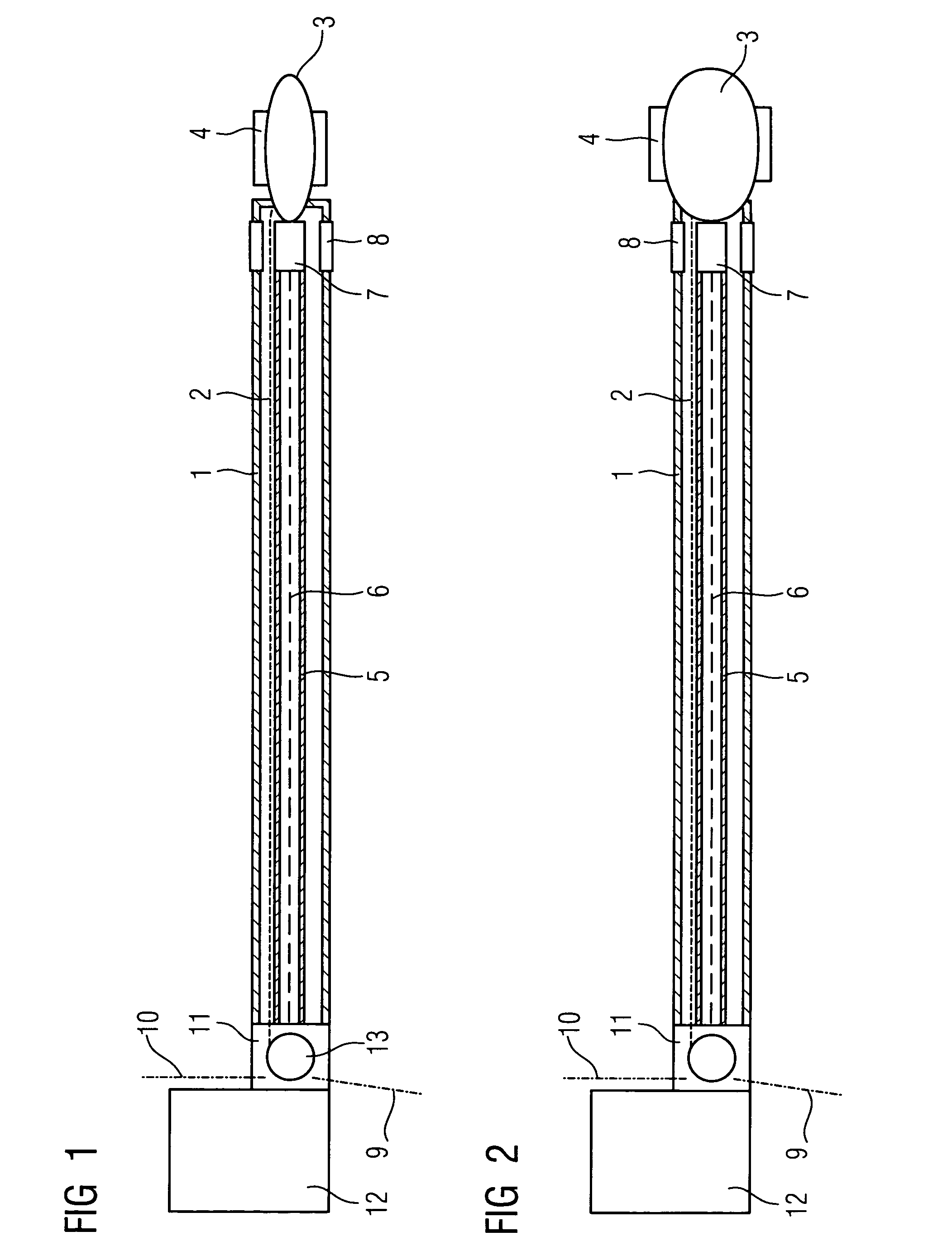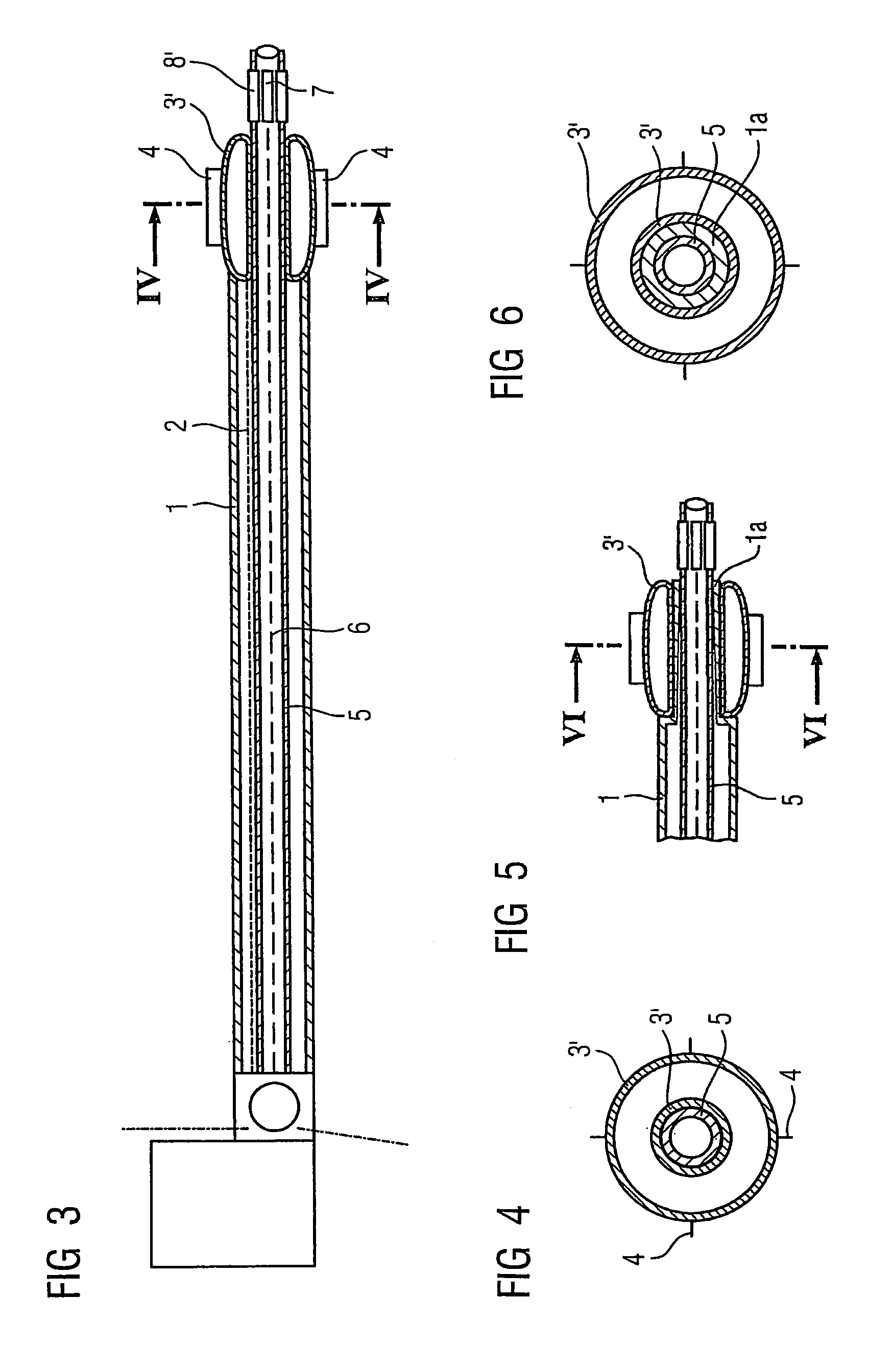Catheter device for applying a medical cutting balloon intervention
a catheter and cutting balloon technology, applied in the field of catheter devices for cutting balloon interventions, can solve the problems of only showing coronary arteries, additional process steps and additional cost of stents, and increase in resting rate, and achieve the effect of convenient operation
- Summary
- Abstract
- Description
- Claims
- Application Information
AI Technical Summary
Benefits of technology
Problems solved by technology
Method used
Image
Examples
Embodiment Construction
[0042]FIGS. 1 and 2 show schematic diagrams of the basic structure and operating mode of the cutting balloon catheter with integrated OCT monitoring according to the invention to be used for stenosis removal. Arranged inside the flexible catheter sheath 1 is an inflation line 2 to inflate the cutting balloon 3 fixed at the front end of the catheter sheath 1, on the outside of which cutting balloon there are a plurality of in particular three to four cutting blades 4, arranged with their axes essentially parallel. When the balloon opens, these blades 4 make longitudinal cuts in the vascular deposits or “shave” plaque from the vessel wall, before the coronary artery is dilated by the balloon.
[0043]A hollow flexible drive shaft 5 with a glass-fiber signal line 6 arranged therein for an OCT sensor 7 preferably configured as a mirror, which is arranged directly behind the cutting balloon 3 inside a transparent annular window 8 in the catheter sheath 1, is arranged in the flexible cathete...
PUM
| Property | Measurement | Unit |
|---|---|---|
| flexible | aaaaa | aaaaa |
| magnetic | aaaaa | aaaaa |
| circumference | aaaaa | aaaaa |
Abstract
Description
Claims
Application Information
 Login to View More
Login to View More - R&D
- Intellectual Property
- Life Sciences
- Materials
- Tech Scout
- Unparalleled Data Quality
- Higher Quality Content
- 60% Fewer Hallucinations
Browse by: Latest US Patents, China's latest patents, Technical Efficacy Thesaurus, Application Domain, Technology Topic, Popular Technical Reports.
© 2025 PatSnap. All rights reserved.Legal|Privacy policy|Modern Slavery Act Transparency Statement|Sitemap|About US| Contact US: help@patsnap.com



